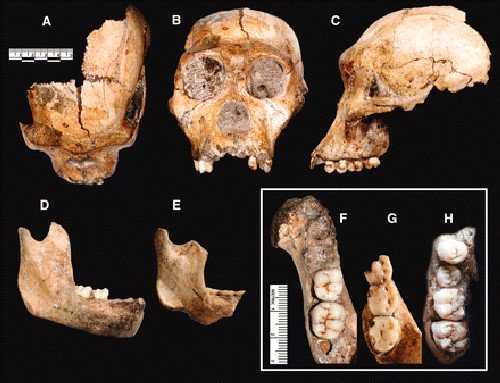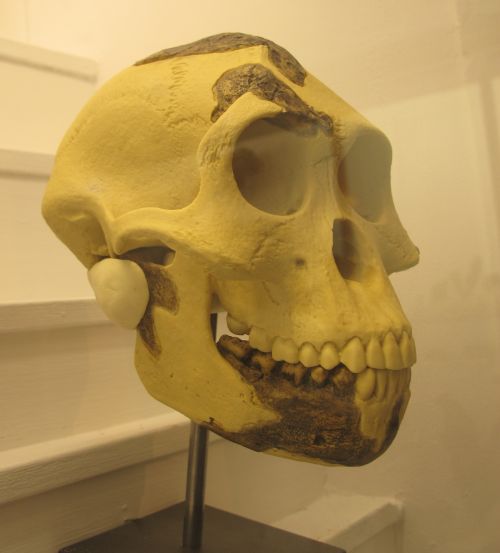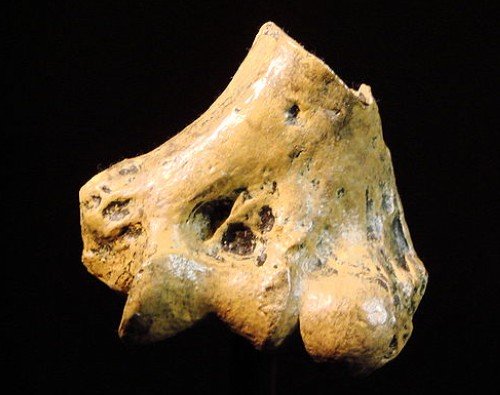Australopithecus:
The Southern Ape That Walks Upright
Australopithecus is a genus of extinct hominids containing at least eight species. The word "Australopithecus" means "Southern Ape" because they have all been found in Africa.
Australopithecines are mainly noted for upright walking, and they lived from 4.2 million years ago (mya) to around 1.5 mya.

Australopithecus sediba cranium, the most recently described Australopithecine. Science magazine, 2010
What's a Genus?
Genus is the taxonomic classification right above species. Species is the most specific classification.
We are of the genus Homo, and our species is sapiens. The Homo designation is shared with several other species, all extinct (although Homo floresiensis, the "hobbit" species, went extinct just 13,000 years ago!).
The australopithecines are the immediate predecessors to the Homo line, and they shared the earth—exclusively in Africa—for about one million years. Homo habilis, the most ancient species of the Homo lineage, dates all the way back to 2.4 mya.
Features of the Genus Australopithecus
 Australopithecus afarenis skull (Lucy's species)
Australopithecus afarenis skull (Lucy's species)public domain
It is in the Australopithecine line that we first begin to see an increase in brain-size. Over their almost 3 million years on earth, they also became progressively more adept at bipedal (two-foot) walking.
Other features varied wildly. Some had thinner faces, bones, and bodies, and smaller teeth. They all had smaller canines than modern apes.
The thinner Australopithecines are known as gracile. Others were much thicker and heavier, both in the bones of their face and body and in their build. They also had more massive teeth, suitable for a rough diet of leaves and other plants. These are known as robust Australopithecines, and they are believed to have died out.
There was even a species of "Southern Ape" known as Australopithecus Robustus. They were found in South Africa, along with almost all other robust members of the genus.
 Australopithecus anamensis bone
Australopithecus anamensis boneused with permission
Species of Australopithecines
The most well-known of the Australopithecines is A. afarensis, which produced the 60% complete fossil skeleton known as Lucy.
Others include:
- anamensis: we know very little about this earliest member of the genus, possessing just a tibia and lower jawbone.
- africanus: seems to be a descendant of afarensis with a human-like pelvis; africanus is one of the only gracile Australopithecines in found in South Africa, though there is now a possible Homo species, gautengensis, found in South Africa, though its new and not yet described.
- garhi: only a partial skull; little is known
- aethiopicus: a very puzzling species, known from a skull and a few bones
- robustus: bigger brain, but more massive face, too; some bones found with it may have been made into tools!
- sediba: brand new; described in 2010
- boisei: may be same species as robustus, but found in west Africa—Ethiopia, Kenya, Tanzania—like most of man's early ancestors
Return to Human Evolution Timeline